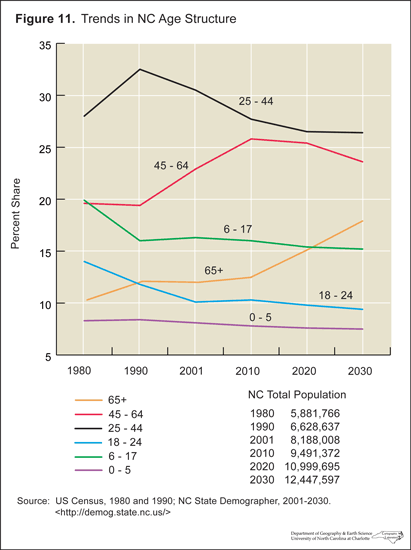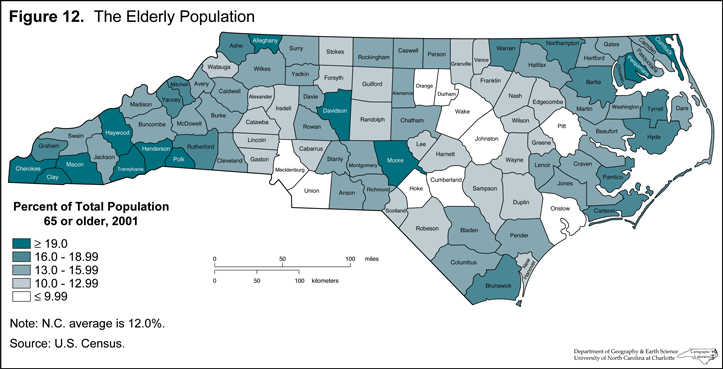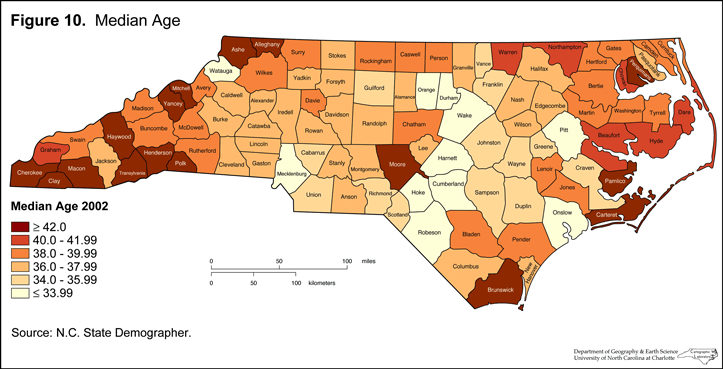One of the more significant aspects of the state’s demography is its age structure. Figure 10 shows that the counties with median ages of less than 34 years are in three types of situations, some areas having some or all of the three. They are: (1) metro areas, especially Raleigh-Durham and Charlotte, (2) college or universities, such as Orange, Pitt and Watauga, (3) military bases, notably Cumberland and Onslow counties. On the other hand, median ages of greater than 42 years are clustered either in the western mountains or in several coastal counties. Figure 11 profiles recent and projected changes in the state’s age structure. Perhaps most striking component of these changes is the dramatic increase in the proportion aged 65 or more. This reflects the general “graying” of the US population, caused by improving health care and greater longevity. This elderly cohort is projected to rise from just over 10 percent of the total in 1980 to about 18 percent by 2030. In consequence, all other age cohorts are expected to decline in their proportions of the state total. However, it should be pointed out that these smaller proportions will apply to larger totals so the actual numbers in each will actually increase. For example, Table 3 shows that the school age group, those aged 6 to 17 years, will increase by over 553 thousand even though it is expected to decline from 16.3 to 15.2 percent of the total between 2001 and 2030.

The recent distribution of North Carolina’s senior population is illustrated in Figure 12. The proportion of those aged 65 or older was less than 10 percent in most of the larger metro counties. In contrast, there were two situations in which the proportion exceeded 19 percent. One was in either western mountain counties or in the northeastern part of the state. These are places which have experienced out-migration or slow growth. In these cases it is typical for younger age groups to leave, in search of better economic opportunities elsewhere. This “negative selectivity” leaves behind most of the elderly population. The other situation is generally also in the mountains or along the coast. North Carolina is a major destination for retirees. Most of them are attracted to places such as Moore County, site of Southern Pines and Pinehurst, to Polk and Henderson Counties in the west, or to some coastal beach communities.

